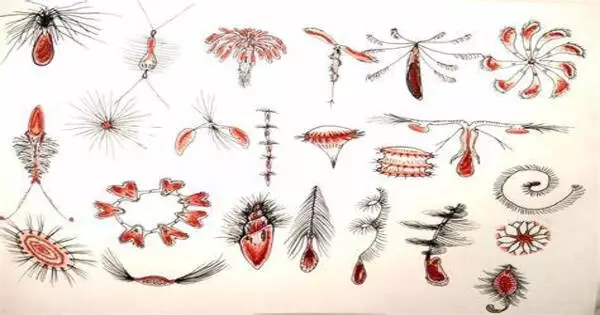Aeroplankton is a diverse group of tiny airborne organisms that include bacteria, fungal spores, algae, minute insects, and other microbes. Aerial plankton are small lifeforms that float and drift in the air, transported by the wind. These organisms are carried by the wind and can be found at different levels of the Earth’s atmosphere.
Aeroplankton is important in ecosystem dynamics because it may disperse over long distances and contribute to biological processes in a variety of habitats. The majority of the living creatures that comprise aeroplankton are very small to microscopic in size, and many of them can be difficult to detect due to their small size. Scientists collect them for study in traps and sweep nets from aircraft, kites or balloons. The study of the dispersion of these particles is called aerobiology.
Pollen, spores from fungus and plants, microscopic insects, and microorganisms such as bacteria are all examples of aeroplankton. These organisms can travel large distances, impacting species distribution and contributing to genetic diversity in diverse habitats.
Aeroplankton is primarily composed of microorganisms such as viruses, approximately 1,000 different species of bacteria, approximately 40,000 different species of fungi, and hundreds of species of protists, algae, mosses, and liverworts that spend some of their life cycle as aeroplankton, often as spores, pollen, and wind-scattered seeds.
Aeroplankton is of special importance in the fields of ecology, atmospheric science, and biodiversity studies because it provides insights into the interconnection of diverse ecosystems and the movement of species across geographical borders. The study of aeroplankton can also have ramifications for agriculture, as the dissemination of pollen and other reproductive structures can affect plant reproduction and gene flow.
Furthermore, microorganisms are carried into the air by terrestrial dust storms, and an even greater volume of airborne marine microorganisms are blasted high into the atmosphere by sea spray. Every day, aeroplankton deposits hundreds of millions of airborne viruses and tens of millions of bacteria on every square meter of the planet.
Aeroplankton is important in ecological processes such as microorganism spread and genetic exchange among populations. These species can be found in a variety of settings, including forests, grasslands, and aquatic ecosystems. They can also have an impact on human health since certain aeroplankton particles contain allergies or viruses. Overall, it reflects an enthralling aspect of Earth’s biodiversity and ecological processes, emphasizing the dynamic essence of life on our planet.
















